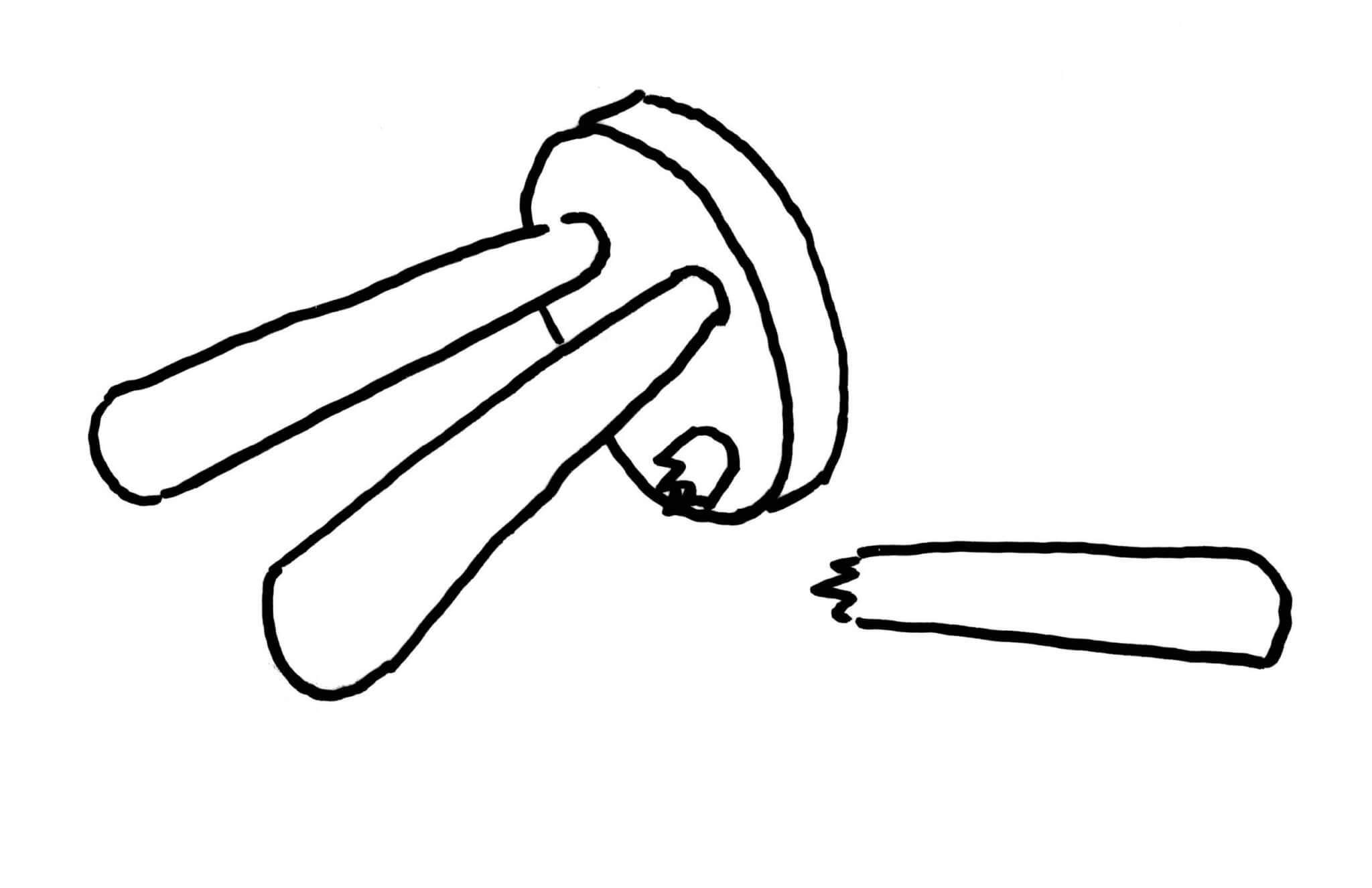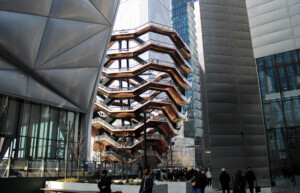Humanize: A Maker’s Guide to Designing Our Cities | Thomas Heatherwick | Simon & Schuster | $30.00
If we’re to believe Thomas Heatherwick in his new book Humanize: A Maker’s Guide to Designing Our Cities, most architects and design professionals are too clouded by their pretentions and outdated ideologies to see how simple things really are. Hiding behind impenetrable jargon and “archispeak,” contemporary architects have misled the public out of conceit and self-indulgent experimentation in the name of art. That is, except for one designer.
Heatherwick has been campaigning against “boringness” for a few years now. In 2022, he gave a TED talk titled “The rise of boring architecture—and the case for radically human buildings” where he contrasted the dullness of modern architecture with the work of the past (and works of his own). Decrying an “epidemic of boringness,” he juxtaposed images on the screen, rhetorically asking the audience which they preferred—one, an “old” pedestrianized street in the shopping district of a small historic European city, the other, a “modern” street lined with contemporary glass curtain walls in a central business district of a major city.

Expanding on Heatherwick’s TED Talk, the argument of Humanize is as follows: somewhere along the way, architecture stopped being designed with humans in mind. In contrast to buildings like Gaudí’s Casa Milà, which Heatherwick cites as a formational influence—full of visual complexity, curves, textural interest, variation in material, and decoration—buildings and places designed today mostly look the same, a problem he describes as “boringness:” buildings that are too plain, too shiny, too anonymous, or just too serious.
If you’ve spent any time reading about architecture on social media platforms like X, this argument won’t sound unfamiliar. You’ve already seen numerous advocates of “traditional architecture” decrying some lost craft, juxtaposing a photo of a traditional building with a modern one. All sorts of claims follow that seem, in turn, to be self-evident from just looking. Much like a TED talk, images rule these platforms, allowing account admins to cynically draw on preconceived notions of what beauty looks like to make a point.
Humanize, in its nearly 500 pages of 14-point font and illustrations, can be seen as the culmination of this press tour and a transparent attempt to capture that kind of virality. Aside from the internet memes that this book seems most inspired by, the spiritual lineage for this work runs through the likes of Leon Krier, Christopher Alexander’s A Pattern Langauge, 101 Things I Learned in Architecture School, and Alain de Botton’s YouTube channel, The School of Life. From these, Humanize inherited a kind of populist simplicity—think aphorism and doodles that cartoonishly make a point. Perhaps in contrast to something more long-winded and theoretically rigorous, there’s a real audience for this kind of stuff.

In Humanize, the blame is mostly placed on modern architecture and its adherents, primarily Le Corbusier. According to Heatherwick, the enduring popularity of his Modern style is its cheapness to build. Over time, the straight lines and flat facades of Le Corbusier became adopted by developers who saw an opportunity to eschew costly ornamentation and creative flourishes under the theoretical guise of modernism. Profit became more important than beauty.
Tossing aside the inaccuracies in his retelling of architectural history, let’s accept this premise for a moment. It’s of course true that the financial considerations of clients are the primary constraint for an architect, but is “boringness” its worst consequence? In fact, at the high-end of the design market where Heatherwick works, full of development as pure speculative investment, novelty is prized. Heatherwick’s hyperfocus on this more subjective quality, over say, housing affordability or adaptation to climate change (both issues that are on secondary to boringness here), is only really justified by the negative health and social consequences of boringness that he cites early in the book.

But his arguments rarely follow logically from the specious scientific evidence that the book’s urgency relies on. Heatherwick claims that there’s research showing that these new buildings are harming us, but references that work in the context of a TED talk (where citations are optional) don’t hold up under scrutiny.
For example, Heatherwick claims that “One major scientific survey in the U.K. found that ‘those who report being bored are more likely to die younger than those who are not bored.’” The citation in the back points to a paper titled “Boredom Proneness: Its Relationship to Psychological and Physical-Health Symptoms,” which is a study of how participants’ health was affected by their tendency to be bored, not whether their environments were boring (all participants were undergraduates at a single southeastern U.S. university). Further referenced sources meant to establish correlation between negative health effects and boredom basically ignore all causes of boredom mentioned in the cited material, which appears to have been collected by keyword search. Sources that are explicitly on the subject on buildings or the built environment mainly rely on evidence with dubious scientific value, such as measuring skin conductance as a proxy for boredom.

But the problem with spending too much time on the details is that it’s a mistake to engage with Heatherwick on his own terms. While flipping through this book, it becomes clear that the intended audience is not architects, or planners, or building professionals: This is a book designed to sit in a museum gift shop next to Wabi Sabi for Artists, Designers, Poets & Philosophers, or for a potential client to pick up while sitting in the waiting room of Heatherwick Studio. It’s an audition for a guest spot on the Joe Rogan podcast and a cover letter for a megaproject in a well-capitalized petrostate.
But that might not even happen, because the book fails even as self-promotion. By the end, Heatherwick fails to meaningfully differentiate himself as a designer at all. Arriving at a “you know it when you see it” approach to identifying non-boring architecture, the work of pretty much every firm of at least some renown would qualify. His criteria for boring architecture is too vague to be useful, ultimately making it unclear what he’s even agitating against. His studio’s proprietary “Boringometer” supposedly neutrally “assesses the front of a building, measuring different types of complexity,” assigning it a score from 1-10. But the total lack of evidence or methodology included makes it hard to believe that it’s anything more than a mechanical turk. At one point, in arguing for the necessity of non-architects (such as himself), he speculates what it would be like if Wes Anderson designed an office block, Björk a parliament building, George R. R. Martin a hotel, or Banksy an affordable housing complex.

It all sounds phoned in, and he’s clearly afraid of making any definitive statements to support the bold claim at the center of the book. The only architects he dares criticize by name are long dead, and he mostly refers to his enemies using terms like “the cult of modern architecture or the “blandemic.” After outlining his criteria for what makes a building boring, he immediately hedges by pointing out some instances in which these faults might be assets. “Boring” is a useful word here because while loaded with negative associations, it describes a subjective experience, flexible enough to mean anything that suits Heatherwick. Ultimately, his solution to the cruel efficiency of neoliberal design is the “human premium,” a justification for his own firm to charge five to ten percent more for “human versions” of their proposed designs.
There’s no way that Heatherwick believes what he says in this book. And if he does, that kind of obliviousness should be disqualifying for designing the type of large-scale projects he’s become known for. Maybe Heatherwick is right that the architect-as-intellectual model of a Rem Koolhaas or a Patrik Schumacher is dead, but surely if this is all that he has to offer, his shameless pandering won’t take its place.
Michael Nicholas is an editor at Failed Architecture.











